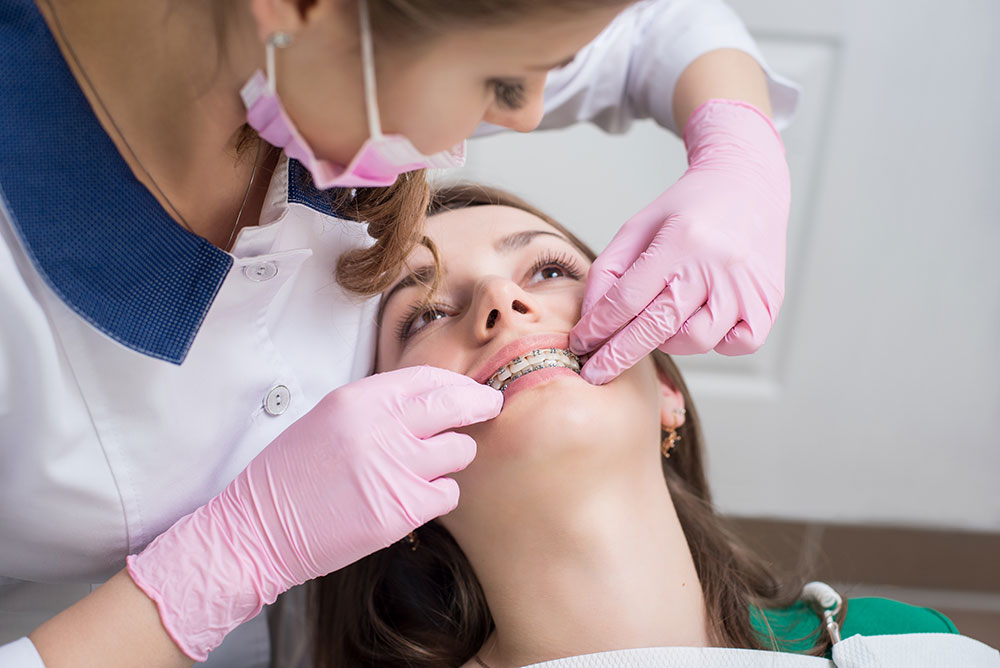Top Guidelines Of Legacy Orthodontics
Top Guidelines Of Legacy Orthodontics
Blog Article
The smart Trick of Legacy Orthodontics That Nobody is Discussing
Table of ContentsWhat Does Legacy Orthodontics Mean?Examine This Report on Legacy OrthodonticsThe 7-Minute Rule for Legacy OrthodonticsThe smart Trick of Legacy Orthodontics That Nobody is Talking AboutThe Definitive Guide to Legacy Orthodontics
At Advanced Orthodontics, we supply clients with a all natural treatment experience. Furthermore, we provide adjustable treatment routines, flexible repayment alternatives and an enjoyable, satisfying experience. orthodontist. Call ( 480) 357-4900 today for additional information and timetable an appointment.An orthodontist is a dental expert educated to diagnose, avoid, and deal with teeth and jaw abnormalities. Orthodontists work with people of all ages, from youngsters to adults.
Malocclusion, or misaligned teeth, can result in dental concerns, consisting of dental cavity, gum tissue illness, and difficult or painful chewing. But not everyone is birthed with straight teeth. If you have a bad bite or huge areas in between your teeth, you may want to get in touch with a dental professional concentrating on orthodontic treatment.
Some Known Facts About Legacy Orthodontics.
( Image Credit Rating: DigitalVision/Getty Images) Orthodontists make use of taken care of and removable oral devices, like dental braces, retainers, and bands, to change the setting of teeth in your mouth. Orthodontic therapy is for oral abnormalities, including: Crooked teethBite issues, like an overbite or an underbiteCrowded teeth or teeth that are as well far apartJaw misalignmentThe objective of orthodontic therapy is to enhance your bite.
While you might believe of orthodontists as mainly for kids or young adults who require braces, they can fix oral troubles at any kind of age. Orthodontists go to college, dental college, and orthodontic school.
, yet not all dental professionals are orthodontists. They concentrate on 2 locations: How to appropriately and securely relocate teeth Exactly how to appropriately lead development in the teeth, jaw, and faceOnce an orthodontist has actually finished training, they have the alternative to come to be board certified.
The Single Strategy To Use For Legacy Orthodontics
Imbalance, or malocclusion, is the most typical factor individuals see an orthodontist. It is genetic and is the result of dimension differences in between the top and reduced jaw or between the jaw and teeth. Malocclusion results in tooth congestion, an askew jaw, or irregular bite patterns. Malocclusion is typically treated with: Your orthodontist affixes metal, ceramic, or plastic square bonds to your teeth.
If you have only minor malocclusion, you might have the ability to use clear dental braces, called aligners, rather of conventional dental braces (https://sandbox.zenodo.org/records/145080). Some individuals require check that a headwear to aid move teeth into line with stress from outside the mouth. After braces or aligners, you'll need to use a retainer. A retainer is a personalized device that keeps your teeth in place.
They're usually used on kids. They can produce additional room in the mouth without needing to draw teeth. If you have a serious underbite or overbite, you may require orthognathic surgery (additionally called orthodontic surgical procedure) to extend or reduce your jaw. Orthodontists make use of wires, surgical screws, or plates to support your jaw bone.
You might need to see an orthodontist if you have: Crowding or otherwise enough space for all of your teethOverbite, when your upper teeth come over your base teethUnderbite, when your base teeth are also much forwardSpacing or issues with gapsCrossbite, which is when your top teeth fit behind your base teeth when your mouth is closedOpen bite or a vertical gap between your front base and top teethMisplaced midline, when the center of your base and top teeth don't align Correcting an oral malocclusion can: Make attacking, eating, and talking easierImprove the balance of our face and your general appearanceEase pain from temporomandibular joint disordersSeparate your teeth and make them simpler to clean, aiding protect against dental caries or dental caries It's usually a dentist who initially notifications misaligned teeth throughout a routine test.
Legacy Orthodontics Things To Know Before You Get This

Throughout your initial orthodontic appointment, you'll likely have: An oral examPhotos taken of your face and smileDental X-raysPanoramic (360 degree) X-rays of your face and headImpressions to create molds of your teethThese tests will assist your orthodontist understand how to wage your treatment. orthodontics. An orthodontist is a dentist that's had training to treat your teeth and jaw
An orthodontist is concentrated on your bite, so something like a damaged tooth would be managed by a dentist. Orthodontists are focused on your bite, or the means your teeth fit together, and the straightness of your teeth.
Ever before asked yourself exactly how stars always appear to have perfectly lined up teeth? Orthodontists are oral experts that focus on remedying irregularities in the teeth and jaws.
Legacy Orthodontics for Beginners

, orthodontists have a varied toolkit at their disposal. These tried-and-true braces use a system of braces bound to the teeth and linked by wires.
Clear aligners, like Invisalign, are a popular alternative for patients seeking a more very discreet therapy choice. These detachable trays are custom-made to considerably move the teeth's setting. Headgear may be used in conjunction with dental braces or aligners to use additional targeted pressures, specifically for correcting jaw disparities. In situations of narrow jaws, palatal expanders can be used to produce space for proper tooth placement.
Report this page